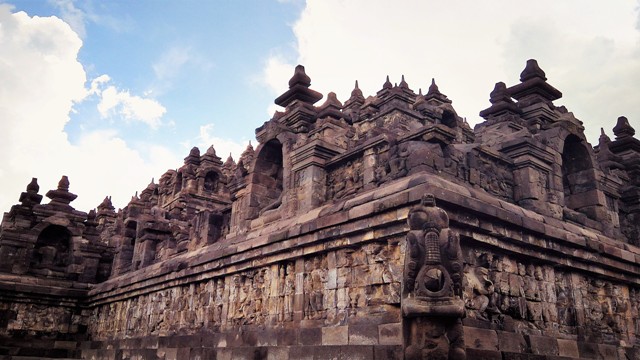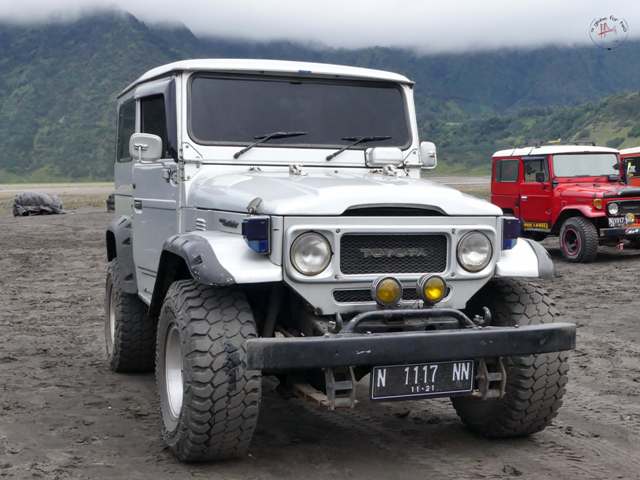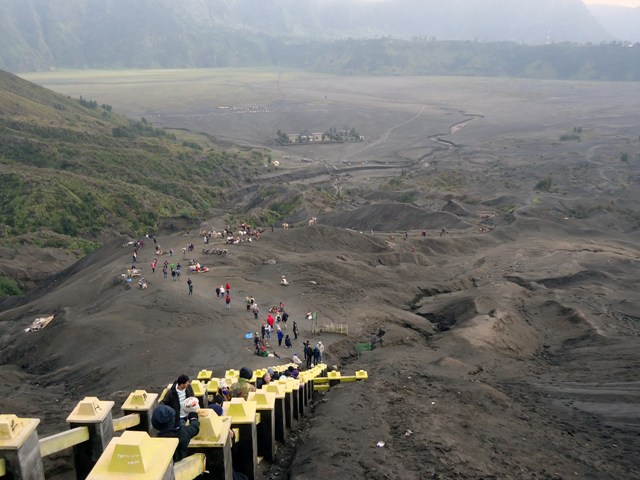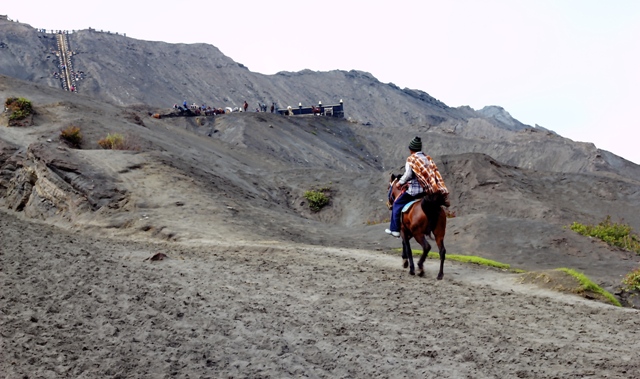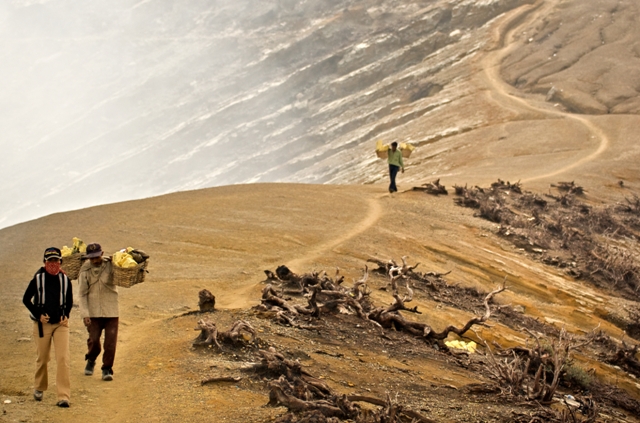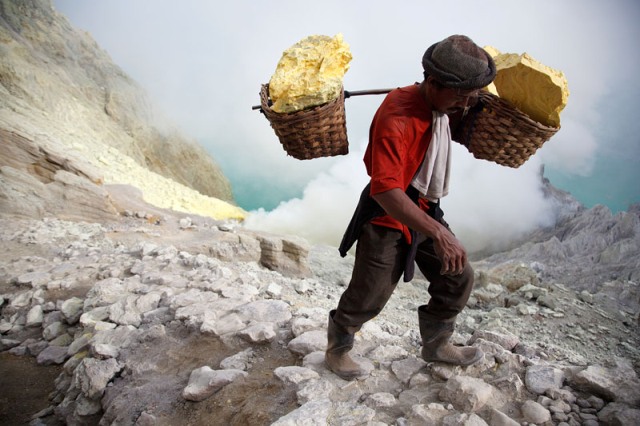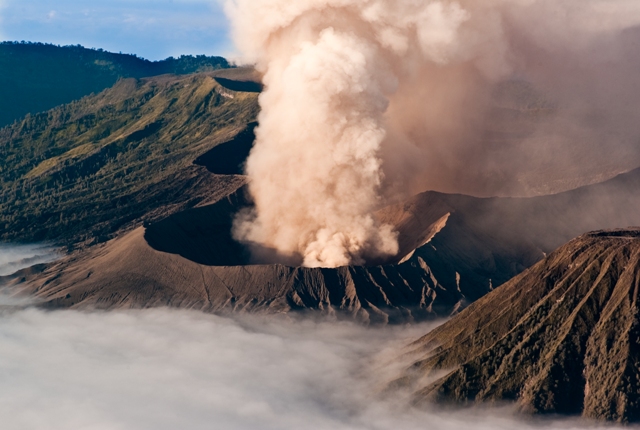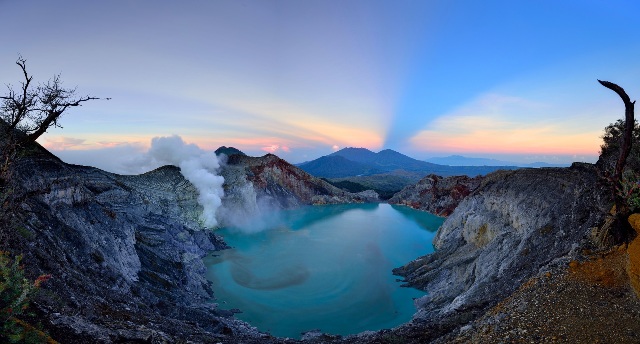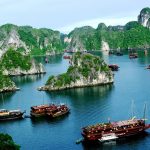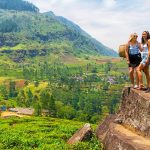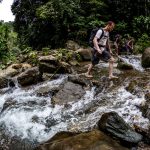Java travel blog — The wonderful backpacking trip for exploring Java Island, Indonesia
The biggest reward for attempting to reach the volcano’s top is the opportunity to view the majestic blue flames generated by ignited sulfuric gas. This is also one of the most remarkable experiences I had while exploring Java.
Although not the most popular tourist destination in Indonesia, Java has a number of natural wonders that are sometimes missed owing to the allure of the adjacent island of Bali. The population of the country’s third-biggest island exceeds 141 million, making it the most populous island on the planet. That doesn’t imply you’re up for a busy city excursion.
In Yogyakarta, we took a quick visit to the world-famous Borobudur temple complex. Built twelve centuries ago, it is still the world’s biggest Buddhist temple and has been designated a UNESCO World Heritage Site. While in Yogyakarta, don’t forget to treat your taste buds to some chicken satay from one of the numerous friendly street vendors. Java is often regarded as the greatest spot in Indonesia to sample the dish. The Indonesian variant of fried rice, known as nasi goreng, is also a must-try.
The early bird gets the worm
From Yogyakarta, the next obvious step is to go east towards Mount Bromo, which is part of the Tenggen Massif. Although automobiles and buses will get you there, we correctly predicted that taking the train would be the most pleasant option. Despite the fact that it took up a significant portion of our day, the seats were comfortable, and we were fortunate to be placed in a very empty and extremely peaceful cabin. Trains will only take you as far as Probolinggo. To go closer to the volcano, you’d have to take a bus or van for an hour and a half, which is a windy but not unpleasant journey.
Tours to the viewpoint and the volcano’s foot usually begin around 3 a.m. A jeep will pick you up at your hotel and take you there. Because there are a limited number of hotels and guest homes, you should make your bookings well in advance during peak season.
Walking to the lookout is another alternative. Needless to say, this will take a little longer, so set your alarm for as early as 1AM, like we did. It is critical to understand that there are two opposing perspectives. The one most tour operators will take you to is the newest, from which you can capture stunning photos of Mount Bromo. We chose option number two, which is more calmer, more serene, and as gorgeous, but also needs a little uphill climb.
Leaving early allows you to witness the sun rise from behind the distant mountain range and see the clouds melt away around the volcano, which is an incredible scene. Early dawn is also when the volcano is most active, as seen by the heavy smoke pouring in the air. It makes an excellent time-lapse video for those of us who enjoy photography. Set up your camera, have a seat, and enjoy the scenery as Mother Nature does all of the work.
As you approach closer to the mountain, you’ll reach the limit of where tour companies’ jeeps can carry you. From there, you may still get on the back of a motorcycle or a horse for the following section. The motorbike will have to leave you off at the volcano’s base, whereas the horse will be able to transport you up the most difficult section of the trip. However, even the horse will have to retire at the foot of the staircase, which was erected halfway up the mountain to make the hardest section more accessible.
Once reaching the summit, you’ll be able to see down into the volcano, which will continually erupt enormous volumes of smoke containing sulfurous particles in the morning. On a regular day, you’ll be able to see it from a safe enough distance to avoid being impacted by it.
After you feel you have taken out enough time to behold this amazing sight, you will still be able to make it back to your hotel in time for breakfast.
The heat is on
Around the easternmost point of Java, a whole distinct type of volcanic experience may be discovered. Ijen is a volcanic complex with a kilometer-wide turquoise-colored acidic lake where sulfur miners make their livelihood. Tours up and down the mountain begin as early as 1 a.m. It takes around two hours in the dark to get to the summit, then another hour or so to get into the crater where all the sulfur is collected. Be cautious going down since miners will regularly have to pass you on their way to transport sulfur rocks weighing up to 100kg to the rim of the volcano and back down to the settlement. The same journey that took us two hours to complete while carrying only 5kg in our backpacks.
You would believe that the miners work so hard only to make a livelihood, but you’d be incorrect. These hardworking men make around $12 per day. I couldn’t assist them bring down the sulfur, but I could help them in a little way by purchasing a small sulfur rock that they had crushed into the shape of a turtle. It was a pleasant memory of our enormous effort climbing the mountain, and it made the miner’s day a little more bearable.
One of the primary reasons we went to all this trouble was to see the imposing blue flames generated by burning sulfuric gas. This also implies that you should put on a gasmask. Sulfuric gas is harmful to your health, particularly your respiratory system. The blue fire is a remarkable phenomena that you won’t be able to witness just anyplace. By the time you return to the volcano’s rim, the sun will have begun to rise, clearing the air for you to gaze upon the stunning blue lake.
Although the hike is strenuous, the mountain’s base is easily accessible from Banyuwangi, which is accessible by rail from Probolinggo, however most tour operators prefer to transport you by bus through winding mountain roads to a settlement west of Ijen.
From Banyuwangi, it’s a short boat journey followed by a four-hour bus ride to the nearest airport on Bali, which you could surely use as an excuse to relax on some of Bali’s gorgeous beaches after your mountain climbing exploits on Java.
Further information
Itinerary
Flying from Vietnam to Yogyakarta usually comes with a stopover, often in Kuala Lumpur or Singapore. Air Asia flies these routes frequently.
Weather
The dry season spans from May to September. October to April is considered the wet season. Although Indonesia enjoys warm weather throughout the year, higher in the mountains it can get chilly at night time, so warm clothing is recommended for your hikes.
Clothing
Indonesia has the largest Muslim population in the world. Shorts and t-shirts are not frowned upon for both men and women, but appropriate clothing is appreciated.
Note: Mount Bromo and Ijen are active volcanoes with semi-regular eruptions, so it’s wise to be well informed before putting in the time and effort to get there and be sure that the volcano is approachable.












